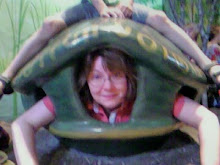 Daily Kup (My Life on the Cub Scout Bear Trail)
Daily Kup (My Life on the Cub Scout Bear Trail)
I believe that I was born with a pile of incomplete projects. Projects are like the mythological hydras; you slice off the head of one and two others will appear in its place.
On this last day of school vacation, I gathered the project team of Attila "Can I Play a Video Game Instead" the Son and Princess "I Wasn't Pinching Him, I Just Wanted To Know Where He Was" Potatohead. Needless to say, Spring Break has been a little tough on me. I've grown used to quiet during the day and the subtle joy that comes from being able to take a shower without people who need you right then for your referee skills.
With our project team assembled and positioned apart beyond arm's length to mitigate the aforementioned location-identification-through-pinching, we faced the project that we had been avoiding all week: Completing and installing a wren house.
Mr. T and the Son had built the house at a Cub Scout meeting last weekend. In order to get the very last achievement signed off of the 692 or so needed to complete the Bear Trail and transmute into some other kind of animal with a different colored neckerchief, we needed to get this birdhouse completed and positioned for occupancy.
If you want to build your own wren house to attract these drab but vocal little songbirds, the construction is not hard:
Step 1: Get a Cub Scout.
Step 2: If you don't have a Cub Scout handy, you can borrow mine. Really. Any time you want. If you are considering having children and are wavering, this experience will drive you clearly to one side or the other. Trust me.
Step 3: If you persist in your aim not to have a Cub Scout, here are
free Cub Scout-less plans for cutting and assembling a wren house.
How do you know that this is a wren house and not built for another type of bird -- say, a bluebird or any of the
Kardashians? The diameter of the hole is critical. Wrens are small and their houses feature an entrance hole 1" to 1-1/8" in diameter. The hole on a house for the slightly larger bluebird is 1-1/4" and for one of the more surgically-altered Kardashians can be up to 4" in diameter. The size of the entrance restricts a larger bird from entering and doing something antisocial like coming for dinner and eating the inhabitants. I'm personally thinking of getting a smaller front door on my house for exactly this reason. (Don't take this personally, Phil.)
The kit house as built by the little boys has the correct hole diameter but needs a few modifications to make it a perfect home for a wandering wren family. First, wrens do not need a perch below the entrance hole. Wrens don't use them but other birds appreciate the stability that the perches afford that permits a hungry guest to grab on while poking his head in for a baby wren snack.
 |
| "No wire hangers!" |
Second, the metal hangers on the back are a great idea for placing the birdhouse on the siding of your house or on your expensive fence. Or even to create a pathway for infection by nailing into one of your Dutch Elms in case you have $400 in tree removal money burning a hole in your pocket. I love birds and all, but off with the stationary hanger and on with a nice padded cable to hang over a tree limb. Wrens are one of the few birds to tolerate a birdhouse that swings gently in the breeze.
 |
| Air in, liquid out |
Finally, these are birds that don't have maid service. Like any dorm room, they need some air holes for ventilation and a couple of drainage holes in the floor to remove whatever liquid that may accumulate.
 |
| Martha's would have interior lighting |
 |
See the new Bear Scout.
He must stand here until Fall. |
The paint is just for fun and to satisfy my inner
Martha. It's the same color as my front door and the trim on my mailbox. Martha would approve.
Here is the completed birdhouse. If you don't have a Cub Scout to hang your birdhouse from, I can set you up.
I know a guy.
He's a Scoutmaster.
One project down, three hundred to go.
For Rent
Be the first in your neighborhood to see this one room rental unit. New construction and freshly painted. Close to parks, schools, and bus lines.
Good ventilation. No appliances included. Natural heating and air conditioning.
"If you lived here, you'd be home already."
 Daily Kup (My Life in Parking Lots)
Daily Kup (My Life in Parking Lots)
















